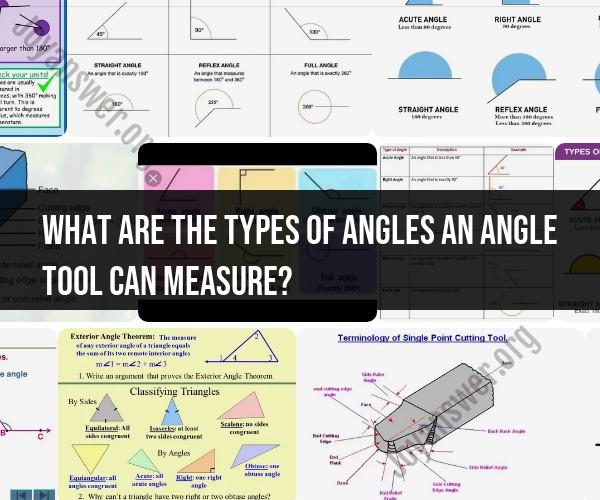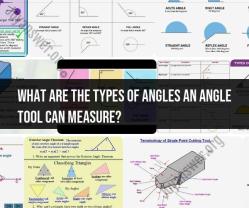What are the types of angles an angle tool can measure?
An angle tool, such as a protractor or a digital angle finder, is designed to measure various types of angles. Here are the common types of angles that an angle tool can measure:
Acute Angle: An acute angle is an angle that measures less than 90 degrees. Angle tools can accurately measure acute angles, and protractors often have markings specifically for acute angles.
Right Angle: A right angle measures exactly 90 degrees. Many angle tools have a perpendicular line indicator to assist in measuring right angles.
Obtuse Angle: An obtuse angle is an angle that measures more than 90 degrees but less than 180 degrees. Angle tools can measure obtuse angles by extending beyond 90 degrees.
Straight Angle: A straight angle measures exactly 180 degrees. Angle tools can be used to measure straight angles by aligning them along the line.
Reflex Angle: A reflex angle is an angle that measures more than 180 degrees but less than 360 degrees. Angle tools can be used to measure reflex angles by extending the measurement beyond 180 degrees.
Full Circle: A full circle is a complete rotation, measuring 360 degrees. Angle tools can measure a full circle by aligning them with a circular or angular object.
Complementary Angles: Complementary angles are two angles that add up to 90 degrees. Angle tools can measure one of the angles, and you can calculate the complementary angle by subtracting the measurement from 90 degrees.
Supplementary Angles: Supplementary angles are two angles that add up to 180 degrees. Angle tools can measure one of the angles, and you can calculate the supplementary angle by subtracting the measurement from 180 degrees.
Interior and Exterior Angles: In geometry and trigonometry, you often need to measure interior and exterior angles of polygons. Angle tools can measure these angles as well, aiding in geometry problems and construction tasks.
Vertical Angles: Vertical angles are formed when two lines intersect. They are always congruent, meaning they have the same measurement. Angle tools can measure vertical angles in various geometric configurations.
Remember that the specific type of angle tool you use may determine the precision and ease of measurement for different angle types. Digital angle finders, for example, may offer more versatility and accuracy than traditional protractors for measuring various angles. Additionally, some angle tools may be specialized for particular applications, such as carpentry, metalworking, or surveying, and may include features tailored to those needs.


